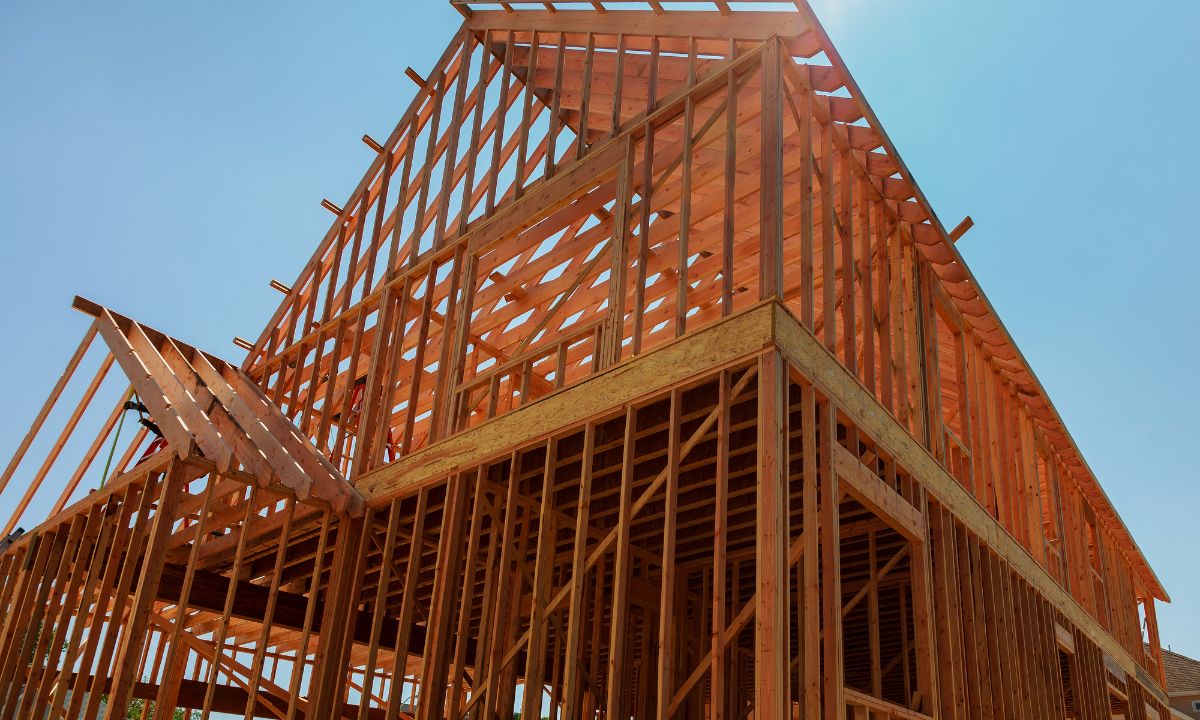 Purchasing a home is a major life decision, and for many homebuyers, the ideal property may not always come fully finished. An unfinished home offers a unique opportunity to create a space that suits your family’s needs while potentially saving money upfront. Whether you’re looking to save on your initial purchase or enjoy the flexibility of customizing your home, buying an unfinished house could be a great option.
Purchasing a home is a major life decision, and for many homebuyers, the ideal property may not always come fully finished. An unfinished home offers a unique opportunity to create a space that suits your family’s needs while potentially saving money upfront. Whether you’re looking to save on your initial purchase or enjoy the flexibility of customizing your home, buying an unfinished house could be a great option.
If you’re considering an unfinished home as your next residence, here’s why it might be the right choice for you and your family.
Save Money on the Purchase Price
One of the primary advantages of buying an unfinished home is the potential for lower upfront costs. Unfinished homes are typically priced lower than fully completed homes, as they don’t include the final touches such as flooring, cabinetry, or fully completed rooms. This can provide you with the opportunity to purchase a larger home or a more desirable location, without the higher price tag.
The money saved on the initial purchase can be used to customize the property over time—whether you want to finish additional rooms, upgrade the kitchen, or add features that meet your family’s needs.
Customize the Home to Fit Your Needs
When you buy an unfinished home, you have the freedom to customize the space to fit your family’s unique needs and lifestyle. Many unfinished homes come with the basics—such as a foundation, walls, and basic infrastructure—leaving you with the flexibility to finish rooms the way you want.
For example, you might purchase a home with an unfinished basement or attic, which can later be turned into additional bedrooms, a home office, or even a family room. This gives you the chance to create the living spaces you’ve always wanted, without having to make compromises.
Additionally, unfinished homes often allow you to select your preferred finishes, such as flooring, paint colors, or fixtures, meaning you can tailor every detail to your personal taste.
Build Equity as You Complete the Home
Another benefit of buying an unfinished home is the potential to increase its value as you make improvements. As you finish the space—whether it’s completing the upper floor, installing flooring, or adding a bathroom—the home becomes more livable, and its value naturally increases.
Completing the home in stages also allows you to work within your budget and prioritize the most important areas first. This can give you a sense of accomplishment as you gradually transform the house into the perfect home for your family, all while building equity over time.
Flexibility in Making Cost-Saving Decisions
One of the best things about buying an unfinished home is the flexibility to make decisions that align with your budget and timeline. For instance, many unfinished homes come with plans for additional features like garages or extra rooms. If you don’t need these features right away, you can choose to leave them out, saving you money in the process.
For example, if there’s a planned garage or additional bedroom, but you don’t currently need or want the space, you can avoid the cost of building it. Instead, you could focus on completing other areas that are more important to your family, such as the kitchen or living room. This flexibility can help you save on the overall cost of the home while still creating a space that works for your family.
Things to Consider Before Buying an Unfinished Home
While buying an unfinished home can be an excellent option, it’s important to approach the process with a clear understanding of what needs to be completed and what you can afford. Here are some things to keep in mind:
1. Have a Realistic Budget for Finishing the Home
Before committing to an unfinished home, make sure you have a clear idea of how much you will need to spend to finish the property. Unfinished homes often require work in multiple areas, such as plumbing, electrical, flooring, and drywall. While these tasks can be completed gradually, it’s important to budget for them and plan how you’ll fund the work.
2. Check Bank Financing Options
Not all lenders are willing to finance unfinished homes. Many banks require that a home meets certain livability standards before they will approve a mortgage. This may mean that the home needs to have at least basic living spaces finished, such as a kitchen, bathroom, and bedroom. Be sure to check with your bank to ensure that the unfinished property will qualify for financing.
Some banks may offer loans specifically for homes in need of renovation, but it’s important to understand the specific requirements before you start the buying process.
3. Understand Local Building Codes and Permits
As you finish an unfinished home, you will need to ensure that all work is done according to local building codes. This means obtaining permits for electrical, plumbing, or structural work, and ensuring that any modifications meet safety standards. If you plan to do some of the work yourself, or hire contractors, be sure to consult with your local building department to understand the requirements.
4. Know What Work is Required to Make the Home Livable
When purchasing an unfinished home, it’s important to know what areas need to be completed to make the property suitable for daily living. You may need to finish entire floors, install flooring, complete the kitchen, or even put up walls. Additionally, some unfinished homes might lack essential utilities like heating, air conditioning, or running water in certain areas. Knowing what’s needed will help you determine whether this is a manageable project for you and your family.
Make an Unfinished Home Your Own
For many buyers, purchasing an unfinished home presents a unique opportunity to get into homeownership at a lower cost while creating a space that is tailored to their needs. Whether you’re looking for a larger home with room to grow, or simply want to customize every detail of your living space, an unfinished home can offer the flexibility to make your vision a reality.
The work might take time, but the result will be a home that’s uniquely yours—one where you can build memories for years to come.
 When it comes to homeownership, one of the most important aspects of the process is ensuring you have the proper legal documentation that proves your ownership. This documentation usually comes in the form of a title or a deed. These documents not only provide proof of ownership but also serve as a way to protect your rights to the property. Whether you’re buying your first home or adding to your real estate portfolio, understanding the difference between titles and deeds is essential to securing your investment.
When it comes to homeownership, one of the most important aspects of the process is ensuring you have the proper legal documentation that proves your ownership. This documentation usually comes in the form of a title or a deed. These documents not only provide proof of ownership but also serve as a way to protect your rights to the property. Whether you’re buying your first home or adding to your real estate portfolio, understanding the difference between titles and deeds is essential to securing your investment. Owning a pool is a dream for many homeowners, offering a perfect spot for exercise, relaxation, and fun with family and friends. However, it’s essential to understand the costs associated with maintaining a pool before diving into ownership. Pool maintenance is crucial for keeping your water clean, safe, and enjoyable throughout the season. Here’s a breakdown of what you can expect when it comes to pool maintenance costs.
Owning a pool is a dream for many homeowners, offering a perfect spot for exercise, relaxation, and fun with family and friends. However, it’s essential to understand the costs associated with maintaining a pool before diving into ownership. Pool maintenance is crucial for keeping your water clean, safe, and enjoyable throughout the season. Here’s a breakdown of what you can expect when it comes to pool maintenance costs. Navigating the real estate market can be a complex journey, especially with the variety of terms and statuses you encounter during your search for the perfect home. One such term that often confuses homebuyers is “sale pending.” What does it mean when a property is listed as “sale pending,” and how should you approach these listings? Let’s break it down.
Navigating the real estate market can be a complex journey, especially with the variety of terms and statuses you encounter during your search for the perfect home. One such term that often confuses homebuyers is “sale pending.” What does it mean when a property is listed as “sale pending,” and how should you approach these listings? Let’s break it down. Join us as we navigate through the common queries that may emerge throughout your mortgage journey. Remember, your quest for homeownership should be illuminated with comprehension and direction. Let’s discuss the primary 4 mortgage inquiries and decode the secrets to unlocking the gateway to your ideal home.
Join us as we navigate through the common queries that may emerge throughout your mortgage journey. Remember, your quest for homeownership should be illuminated with comprehension and direction. Let’s discuss the primary 4 mortgage inquiries and decode the secrets to unlocking the gateway to your ideal home. Foreclosed properties can be diamonds in the rough for savvy homebuyers and investors alike. These distressed properties often come at discounted prices, presenting an opportunity to snag a great deal. However, navigating the process of buying a foreclosed property can be tricky and requires careful consideration. To help you make the most of this opportunity, here are some insider tips to keep in mind:
Foreclosed properties can be diamonds in the rough for savvy homebuyers and investors alike. These distressed properties often come at discounted prices, presenting an opportunity to snag a great deal. However, navigating the process of buying a foreclosed property can be tricky and requires careful consideration. To help you make the most of this opportunity, here are some insider tips to keep in mind: